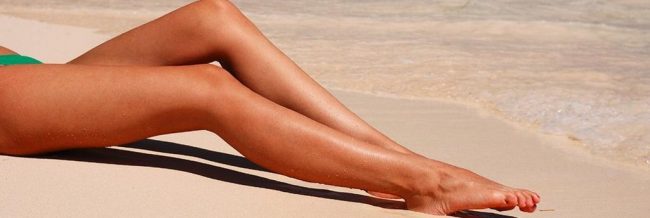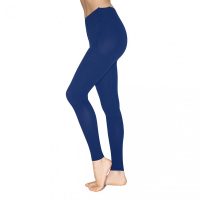
Individuals, especially women, become dreadful when it comes to the topic of varicose veins. This is a condition characterized by palpable subcutaneous veins having reversed blood flow. Varicose veins occur commonly in the legs. Prevalence of varicose veins vary and the visible varicose veins found at the lower limbs are estimated to affect at least a third of the population. Different risk factors are associated for developing varicose veins but the actual cause is still unidentified. Some people having varicose veins report no symptoms or mild symptoms. Some experience pain, itching, and aching, which can affect their quality of life. Over time, the varicose veins can become more severe and lead to changes in skin color, ulceration, or bleeding at the affected site. In terms of severe disease related to varicose veins, it is only estimated that 3 to 6 percent of the population with varicose veins may develop ulceration later in life.
Spider Veins vs Varicose Veins
Even though harmless, spider veins are often presented for treatment because of its appearance. Spider veins are also termed as telangiectasias or angioectasias. This can appear anywhere in the body but more common on the face. In other areas, such as the legs, spider veins are also present but can be accompanied by hidden varicose veins or venous reflux.
Causes and Factors to Consider in Varicose Veins and Spider Veins
Often, it is said that varicose veins and spider veins are prevalent genetically. There is a hereditary component. Arteries and veins of the circulatory system are responsible for the smooth flow of blood in the body from the heart. The returning blood or the unoxygenated blood travels through the veins with the process of muscle contractions and system of valves as well. Veins only have one-way valves permitting blood to get through but not back. When the walls of the vein become less elastic or stretched, the valves get weaker. Blood may accumulate in the veins because it cannot flow backwards causing the enlarged and swollen vein. Women are likely to have varicose veins; however, there are also other factors to be considered such as:
- Obesity. Obese or overweight people have a higher risk of developing varicose veins.
- Pregnancy. Women are likely to develop varicose vein in their pregnancy than at any other time in their lives. When the pregnant women have much more blood volume in the body, this will create added pressure in the circulatory system. Alternations in the hormone balance can also lead to the relaxation of blood vessel walls.
- Age. This is also another factor because of less elasticity of blood vessel as people age.
- Jobs. Occupations can also be a cause especially if the person needs to spend a long time standing up.
- Sedentary Lifestyle. Sitting or standing for long periods can increase the risk of varicose veins. This is especially true when the legs are crossed or bent for longer periods. Staying in one position for a long time forces your veins to work harder and pump blood to the heart.
Getting A Diagnosis
Both varicose and spider veins are diagnosed initially through physical exam. The doctor looks at the legs while sitting or standing. The symptoms are also asked as well. The following are some of the symptoms of people having varicose or spider veins:
- Phlebitis. Vein inflammation accompanied by thrombosis or blood clot inside the affected veins. These may become tender or hard, which is also not similar to deep vein thrombosis.
- Bleeding. The risk of bleeding is rare and can be stopped through firm pressure and treated for removal that can cause further bleeding.
- Eczema. This is a red rash that develops whenever the skin changes are permitted to progress. Hence, the skin changes should be a signal for you to see a physician and seek professional help.
There are several procedures that the professional may perform if the symptoms are present to confirm if you have varicose veins. The following tests and procedures may be performed:
- Angiogram. In this procedure, the physician may be injected through the veins outlining it through x-ray images.
- Duplex Ultrasound. This will help check the blood flow in the veins and search for blood clots. In this kind of ultrasound, sound waves are used to see the flow of blood or any blockage.
Different Options for Varicose Vein Treatment
Physicians from Orlando Varicose Vein Clinic recommend lifestyle changes to those people not experiencing pain or other complications with varicose veins. Lifestyle changes can enhance the appearance and prevent complications with this disorder. However, physicians recommend other treatment options if lifestyle changes do not improve the condition of the patient. These include the following:

Compression Legwear:
This is the first go-to treatment for varicose veins. Compression legwear comes in the form of stockings, knee highs, pantyhose and leggings. These garments work by squeezing the patient’s legs to enhance circulation and encourage proper blood flow upwards against the gravity. Patients who use compression stocking or compression leggings report positive results almost immediately as it aids with swelling, pain, and discomfort.
RejuvaHealth recently launched a new line of “yoga inspired” stylish compression leggings that are a great choice for any suffering from mild varicose veins or spider veins. RejuvahHealth’s line of fashionable compression legwear offer light, mild, moderate and firm compression levels. Their new compression leggings have a mild 15-20 mmhg support level that is ideal for anyone who sits or stands for long periods of time and those that suffers from varicose or spider veins. These leggings are great because the gradual compression distributes the pressure that typically settles near the ankles which helps reduce blood pooling in the legs which will in turn lessen leg pain and swelling.
Remember that it is essential that compression stockings or compression leggings are worn accurately so each part of the leg should have the right amount of compression. Patients should not allow the stockings to roll down. In some instances, wearing compression stockings can make the skin flaky and dry. If this is apparent, then you should tell it to your physician.
Sclerotherapy:
Also known as varicose vein foam treatment, this is the most common treatment for both spider and varicose veins. A chemical is injected to the vein, which causes the walls to stick together and seal the shunt. Without the blood flow, the varicose vein turns into a scar tissue and later fades.
Laser treatments:
In this option, strong light bursts into the skin and vein thereby having the veins disappear. Cooling will reduce the pain and the treatment lasts for only 20 minutes. You can return to your normal activity following this treatment.
Different options for varicose vein treatment are reported to be efficient and successful. Nonetheless, abnormal veins may be present for those who have the varicose veins for a long time. In order to slow down the development of new varicose veins, it is best to wear gradient compression support during the day.



